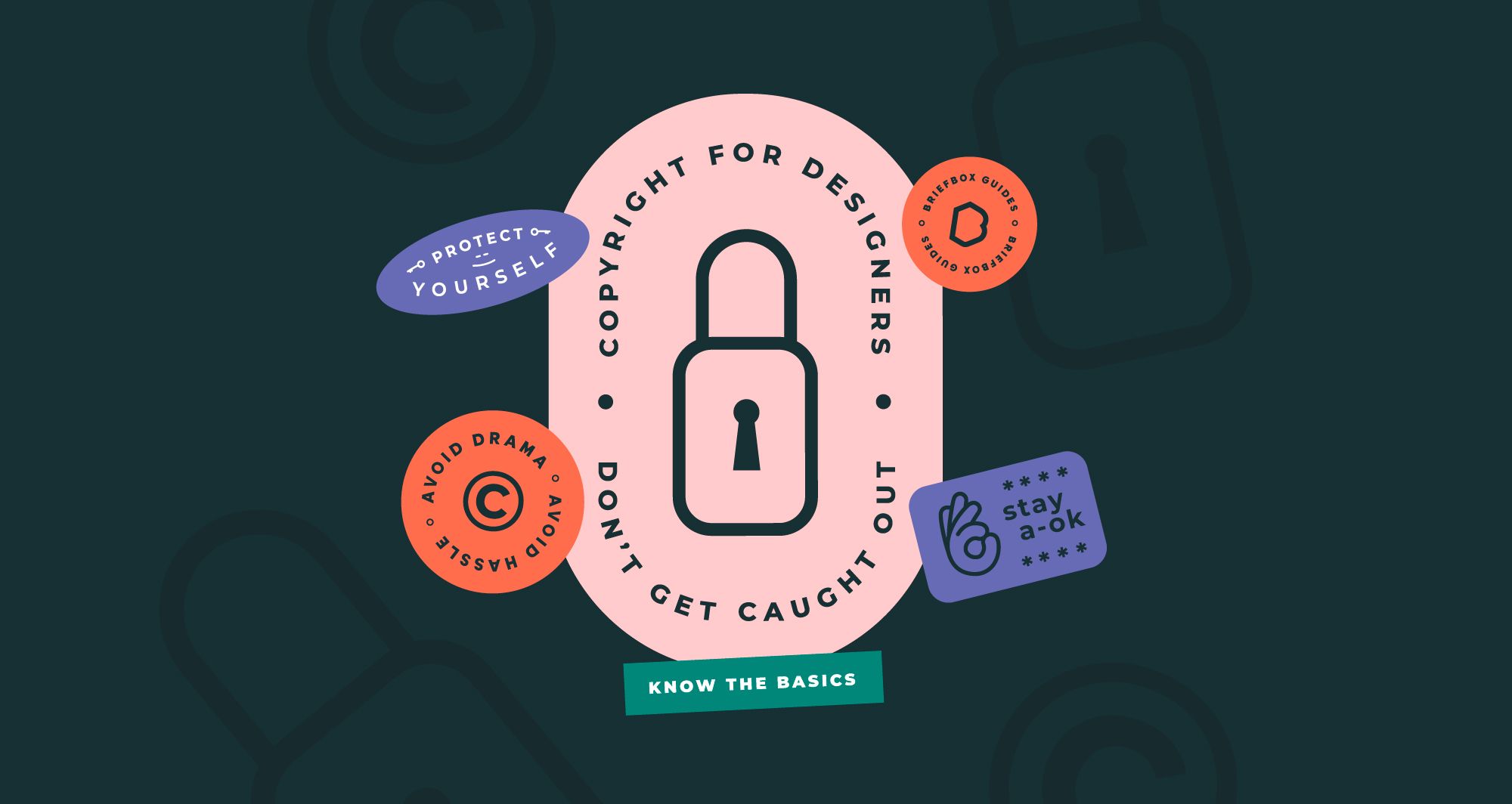Did you say copyright? But I’m a designer, a creative…an artist. Nitty-gritty copyright law doesn’t make me jump out of bed in the morning! Even with a bacon sarnie and a banging flat white. But it’s really important to understand the basics when you start out. These are extra skills that if you demonstrate understanding to clients or an agency, could clinch that dream job for you and protect you further down the line.
Getting to grips with copyright will also give your clients confidence that you know what you’re doing so you won’t get them caught between a rock and a hard place. At the same time, you can cover your back so you can keep on killin’ it and become the creative you want to be.
Although the legal side of design can become complex if you let things get out of hand, overtime as a designer you’ll learn more skills around this sensitive subject, so for now, we’ve included 5 essential tips to make sure you don't get caught out. We’ve dropped in some great resources throughout this article, so, if you feel you’re in a sticky situation or need to find something out quickly, you can jump back to this essential guide to find the information you need.
First off, ‘Copy This Book’, by designer and author Eric Schrijver is an industry favourite; Design Week and Eye on Design both recommend it. Over six short chapters, this is cited as an excellent introduction to copyright law for designers. The book uses real case studies as examples which demonstrate how this legal framework affects your work. Depending on where you are in the world, laws can be different, so also check out this article by Creative Bloq for info on UK and US copyright laws.
What is copyright?
In a nutshell, it’s a form of legal protection that protects your body of work. If you’re new to this then make yourself familiar with common terms, understanding the nuances between trademark, copyright and intellectual property is a good start. This can be tricky but just be aware that these terms mean different things. For example, trademarks need to be registered, but copyright is automatic. Copyright is a form of intellectual property that is specific to the expression of ideas in visual or audio form, but intellectual property is a broader set of laws relating to the expression of ideas.
This quick guide from 99 Designs on the little © is a great starting point!
Rip-offs and copycats.
This can be frustrating and unfortunately, these won’t go away, but if someone’s impersonating your work, or just straight out stealing your designs, know your rights and see how you can take effective action. This is known as copyright infringement, and if you’re correctly clued up you could contact the person directly and come to an understanding. If they know you’re in the right they will likely want to avoid a costly legal fight.
Don’t get caught up in a lawsuit.
Using other designers’ work as inspiration is what we do within the creative industries. Sculptures, architecture, photographs and illustrations – as designers we imbibe the world around us, but maintaining integrity in your body of work is key to becoming a successful designer. Be inspired, but create something new.
Images and illustrations: What’s what and what’s not?
If images, whether photos or illustrations are copyrighted you need permission to use them. Copyright on images can last 70 years, so in some instances, you won’t need permission. Usually, it’s easy enough to check who owns the image and try to keep on top of staying in know. Pixsy, which helps artists find out if their images are being used without permission, has written a quick guide to checking ownership of images before you use them.
If your eyes are going a bit fuzzy from this legal chat then watch this short video from Creative Commons. They are a non-profit organisation that offers a simple, free online service to allow you to grant permission for others to use your work how you want. Copyright can offer opportunities as well, and you might want to take advantage of Creative Commons and get your work out there, and all with the recognition you deserve.
Talk to your clients.
Although copyright can be daunting, remember that your work is automatically owned by you, the creator. If agencies want to re-use and re-work your designs, you can sign it over to them. But without this they’re not allowed, so make sure you communicate what you want them to do specifically with your designs. Some clients might need your education and expertise on the situation too, it’s important to cover all bases so you’re on the same page and both fully understand any licensing issues.
The artist’s J.D helps creatives with legal aspects of their business - read their blog here on how to talk to clients about copyright and check it out for other useful legal pointers too.
Extra Bits n’ Bobs
“What Young Designers Need to Know About Copyright Law”
https://eyeondesign.aiga.org/what-young-designers-need-to-know-about-copyright-law/
‘A Graphic Designers Guide to Copyright’
https://eyeondesign.aiga.org/a-graphic-designers-guide-to-copyright/
“6 Things Designers Should Know About Copyright”
‘Things Every Designer Should Know About Intellectual Property and Copyright Infringement.’
https://99designs.co.uk/blog/design-resources/copyright-infringement/
